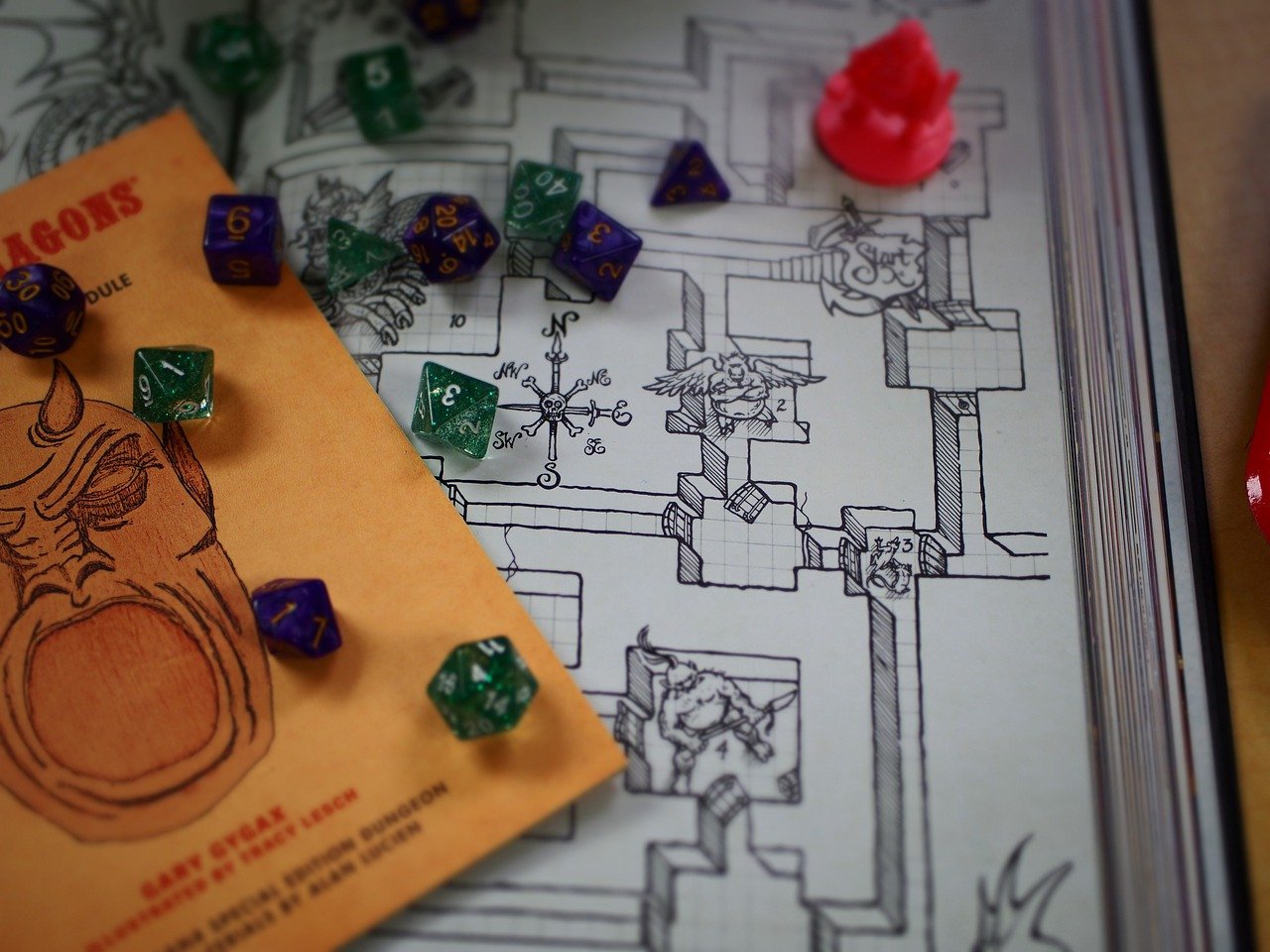There are plenty of reasons to play a Sorcerer in D&D, but Metamagic is the one that most people point to. Beginning at level 2, Sorcerers get their signature feature, Font of Magic which grants sorcery points. You have a number of sorcery points equal to your Sorcerer level (unless you take the Metamagic Adept feat) and can spend them on certain features like gaining extra spell slots, rerolling ability checks, or enhancing your spells with Metamagic.
At level 3, you select two Metamagic options, which are always available to use on your spells (leveled and cantrip) as long as you have the sorcery points to spend. You gain an additional Metamagic option at levels 10 and 17 for a total of 4.
We delve into your Metamagic options, how broadly applicable they are, which spells they work best for, and when you should use them below.
Table of Contents
Careful Spell
When you cast a spell that forces other creatures to make a saving throw, you can protect some of those creatures from the spell’s full force. To do so, you spend 1 sorcery point and choose a number of those creatures up to your Charisma modifier (minimum of one creature). A chosen creature automatically succeeds on its saving throw against the spell.
Careful Spell is the equivalent of the Evocation Wizard’s Sculpt Spells feature and lets you protect your allies from area-of-effect spells. It’s most useful when you have a party that is mainly composed of melee fighters who don’t have ranged options.
Typically, you only run into that problem with Monks and Barbarians, but Monks have the Evasion feature and high Dexterity scores, so they shouldn’t have a problem staying clear of whatever you’re casting.
Candidates For Careful Spell
Fireball
Hypnotic Pattern
Sickening Radiance
Synaptic Static
Sunburst
Distant Spell
When you cast a spell that has a range of 5 feet or greater, you can spend 1 sorcery point to double the range of the spell. When you cast a spell that has a range of touch, you can spend 1 sorcery point to make the range of the spell 30 feet.
Distant Spell is a trickier Metamagic for most builds since the majority of Sorcerer spells are ranged, to begin with. There aren’t many situations where it’s imperative that you increase the range of a ranged spell; this works best with touch spells. Very few Sorcerers want to get into the fray during combat so converting touch spells (for allies or enemies) into 30ft ranged spells can be beneficial.
Candidates For Distant Spell
Plane Shift
Stoneskin
Greater Invisibility
Fly
Dragon’s Breath
Empowered Spell
When you roll damage for a spell, you can spend 1 sorcery point to reroll a number of the damage dice up to your Charisma modifier (minimum of one). You must use the new rolls. You can use Empowered Spell even if you have already used a different Metamagic option during the casting of the spell.
It’s hard to go wrong with Empowered Spell. It fits into any Sorcerer build and can apply to nearly any damaging spell. You’ll want to save this Metamagic for spells that have a lot of damage dice so that you can get as much bang for your buck as possible. Many people take Empowered Spell at 10th or 17th level since you have access to higher-level spells then.
If you play with the rules that on critical hits, you double the dice to calculate damage, Empowered Spell is a fantastic way to ensure that you squeeze every last bit of damage out of your spell.
Candidates For Empowered Spell
Blade of Disaster
Disintegrate
Blight
Fireball
Shatter
Extended Spell
When you cast a spell that has a duration of 1 minute or longer, you can spend 1 sorcery point to double its duration, to a maximum duration of 24 hours.
Divine Soul Sorcerers can likely get the most out of this Metamagic, but Aberrant Mind Sorcerers and Clockwork Soul Sorcerers might find Extended Spell beneficial too. Typically, spells already have suitable durations, and doubling the duration won’t make a big difference. For example, most people get very excited about extending fly, but it only goes from 10 minutes to 20 minutes. That doesn’t impact your adventuring day or your combat (where 10 rounds are 1 minute).
Sorcerers who have access to spells from other lists have more options. Divine Soul Sorcerers have access to the Cleric spell list, which has plenty of great candidates. Clockwork Soul Sorcerers can get abjuration and transmutation spells from the Wizard and Warlock spell lists, and Aberrant Mind Sorcerers can take divination and enchantment spells from the Wizard and Warlock spell lists.
Candidates For Extended Spell
Arcane Eye (Wizard spell list)
Suggestion
Rary’s Telepathic Bond (Wizard spell list)
Armor of Agathys (Warlock spell list)
Mage Armor
Death Ward (Cleric spell list)
Heightened Spell
When you cast a spell that forces a creature to make a saving throw to resist its effects, you can spend 3 sorcery points to give one target of the spell disadvantage on its first saving throw made against the spell.
Heightened Spell is an excellent Metamagic option, especially for spells that have ongoing debuff effects. Spells that make it harder for enemies to succeed at saving throws in the future are wonderful candidates, but you can also use this on crucial spells that you know will make or break the fight. The essential math of D&D shows that the average d20 roll is 10 and, with disadvantage, that average drops to 7.
At very high levels, you’ll likely be facing foes with traits like Legendary Resistance (which allows them to automatically succeed on a saving throw if they roll a failure) or saving throw bonuses that are so high it won’t matter, but there’s never a bad time to use Heightened Spell.
Candidates For Heightened Spell
Feeblemind
Synaptic Static
Sickening Radiance
Banishment
Dominate Monster
Quickened Spell
When you cast a spell that has a casting time of 1 action, you can spend 2 sorcery points to change the casting time to 1 bonus action for this casting. It’s worth remembering the rule about casting two spells in a single round, namely that only one of them can be a leveled spell. For example, if you cast misty step as your bonus action (a level 2 spell) you can only use your action to cast a cantrip.
Quickened Spell doesn’t change that. You can now cast a spell that normally consumes an action as a bonus action, fireball, for example, but you are still limited to using your action to cast a cantrip. Or, you can use Quickened Spell on the cantrip and cast fireball as your action.
Despite that limitation, this Metamagic is amazing and highly recommended for anyone playing a Sorcerer. At low levels, you significantly increase your damage output in a single round, and at higher levels, you can make some nasty combinations with spells that debuff enemies like mind sliver.
Candidates For Quickened Spell
Mind Sliver
Scorching Ray
Slow
Polymorph
Synaptic Static
Seeking Spell
If you make an attack roll for a spell and miss, you can spend 2 sorcery points to reroll the d20, and you must use the new roll. You can use Seeking Spell even if you have already used a different Metamagic option during the casting of the spell.
This works best with spells that have a single attack roll since you can only reroll a single d20. Attacks like scorching ray that have multiple rays aren’t good candidates. Since the majority of Sorcerer spells involve saving throws, this isn’t one of the more useful Metamagic options.
Candidates For Seeking Spell
Crown of Stars
Blade of Disaster
Guiding Bolt (Cleric spell list)
Subtle Spell
When you cast a spell, you can spend 1 sorcery point to cast it without any somatic or verbal components. Despite sounding like a situational thing, the number of situations where this Metamagic could come in handy is staggering. Bound and gagged, looking for an escape? Subtle Spell. Need to do magic while under supervision? Subtle Spell. Sneaking around the guard patrols and want a distraction? Subtle Spell.
The best side effect of Subtle Spell though is that a spell with only somatic and/or verbal components can’t be counterspelled when you use this Metamagic. The reason is that the text of counterspell says that the caster must see or be aware of the fact that someone is casting a spell in order to react with counterspell. If you use Subtle Spell and no material components, there is no way for someone to know that you’re casting. Therefore, you can’t be counterspelled.
Candidates For Subtle Spell
Wish
Teleport
Telekinesis
Misty Step
Invisibility
Transmuted Spell
When you cast a spell that deals a type of damage from the following list, you can spend 1 sorcery point to change that damage type to one of the other listed types: acid, cold, fire, lightning, poison, thunder.
Transmuted Spell is primarily useful for Sorcerers who only have spells that deal one or two types of damage and need to get around an enemy’s resistance or immunity. This can happen because Sorcerers have such a limited number of known spells, and so many spells in Dungeons & Dragons only deal fire damage.
Candidates For Transmuted Spell
Fire Bolt
Fireball
Wall of Fire
Burning Hands
Scorching Ray
Twinned Spell
When you cast a spell that targets only one creature and doesn’t have a range of self, you can spend a number of sorcery points equal to the spell’s level to target a second creature in range with the same spell (1 sorcery point if the spell is a cantrip). To be eligible, a spell must be incapable of targeting more than one creature at the spell’s current level.
This is widely regarded as the best Metamagic option available. There is little better than being able to target two creatures with a spell intended for one. However, with that comes a caveat: the spell must not be able to target more than one creature at the level it’s cast. For example, scorching ray is not eligible for Twinned Spell because it already is capable of targeting multiple creatures.
Another example is hold person. At level 2, it targets one creature so you can twin it. However, at level 3, it targets an additional humanoid, so you can’t twin it at 3rd level and suddenly target 4 people. The spell doesn’t have to be an attack, either. You could use Twinned Spell on invisibility (at 2nd level) to keep two people out of sight.
There have been numerous tweets from Jeremy Crawford clarifying Twinned Spell and ruling on whether it would work on a specific spell or not, but the DM of your game will have the final say on what goes in your campaign.
Candidates For Twinned Spell
Haste
Chromatic Orb
Slow
Polymorph
Dominate Person


